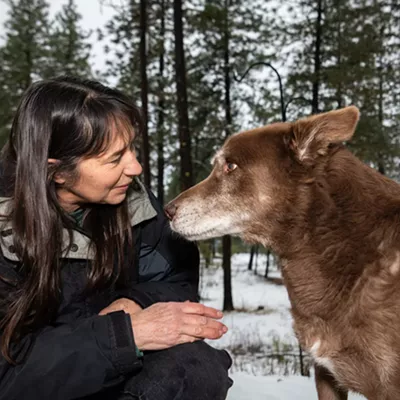The Kenyans
[
{
"name": "Broadstreet - Instory",
"component": "25846487",
"insertPoint": "4",
"requiredCountToDisplay": "4"
},{
"name": "Broadstreet - Empower Local",
"component": "27852456",
"insertPoint": "8",
"requiredCountToDisplay": "8"
},{
"name": "Broadstreet - Instory",
"component": "25846487",
"insertPoint": "12",
"requiredCountToDisplay": "12"
},{
"name": "Broadstreet - Instory - 728x90 / 970x250",
"component": "27852677",
"insertPoint": "18",
"requiredCountToDisplay": "18"
},{
"name": "Broadstreet - Instory",
"component": "25846487",
"insertPoint": "5th",
"startingPoint": "23",
"requiredCountToDisplay": "24",
"maxInsertions": 100
}
]
by Rhiannon Fabian
Every year, spectators stand in awe as the first runner crosses the Bloomsday finish line without a trace of the "in your face" antics that have become so tightly woven into the tradition of American sports. There's no touchdown dance or acrobatics as made famous by NFL players. And people would never see the winner raising the roof like many NBA ballers do. What onlookers will probably see is a Kenyan breaking the tape without even breaking a smile.
Then, this process is repeated as the second, third and fourth place winners cross the line, all Kenyans as well. But, this is no mere coincidence or a freak of nature; it is the triumph of an east African country that has found a way to consistently produce an abundance of unbeatable distance runners.
"They probably are genetically gifted to start," says Tom Ratcliffe, a U.S. agent representing seven Kenyans, two of whom came in first and second for the women in Bloomsday last year.
Reuben Cheruiyot from Kenya won Bloomsday last year in a time of 34 minutes and 10 seconds and has a good chance of winning the race again this year. That is, unless 20-year-old Enock Mitei, a first-time Bloomsday runner from Elameravine, Kenya, can outstride him.
"Us Kenyans cannot allow [Cheruiyot] to go alone," says Mitei. "We have to go with him. I know about him, we'll run together." Mitei's confidence is not a result of arrogance, but rather knowledge that he's put in the time it takes to be a winner.
"I think if God wishes, I might win," he says. "I'm training to be a world record holder." Of his 12 brothers and sisters, he is one of three running professionally, and he admits athleticism runs in the family -- pun intended.
This is Mitei's first year of running professionally in the U.S. He misses his family and will return home when the summer race circuit has been exhausted. Mitei has accomplished what so many Kenyans hope for -- a chance to escape poverty.
"It's a poor country, and it's a good opportunity," says Ratcliffe. "For a lot of the athletes, it's the only way out of poverty. Even though Kenyans dominate nationally, there's really only a handful."
"Running is a major way to make money and become financially secure," says John Tope, U.S. agent for both Cheruiyot and Mitei. He says houses are sold in Kenya for as little as $5,000. With the first place in Bloomsday being $7,000, it's possible for Kenyan runners to earn enough money in several months to support themselves and their families for an entire year.
"I run for the money, and I also like to run," says Mitei.
Situated in eastern Africa between Ethiopia and Somalia, Kenya ranges from arid in its high altitudes to tropical by the Indian Ocean. It is the high altitudes that so many attribute the success of the runners.
"If you're born at altitude, you have more of an advantage than if you just train there," says Tope. Most runners grow up in Kenya's Rift Valley, which has an altitude between 6,000 and 8,000 feet. When they come to the U.S., they train in Denver, where the altitude is a little above 5,000 feet. At high altitudes, blood cells receive less oxygen, which makes it more difficult to train. When the athletes go to a lower elevation to compete, they have an advantage because their bodies are used to working harder.
Some believe Kenyans are so successful because they run everywhere they go. Ratcliffe, who's been to Kenya several times, says no one drives cars.
"You do see lots of kids running with their books down the streets," he says. "It's not a myth, but I don't know if it's contributed to their success."
Kenya's outstanding production of runners seems to come more from the specialized training that starts early and continues long after high school.
"The Kenyans have a good system of camps," says Tope. "The military supports a lot of runners, and there are special national coaches that train them."
Mitei says all he does is train, but he admits a resting period is crucial. "We train three times a day," he says. "In the morning for one hour, at 10 am we train for 40 minutes, and in the evening we train for 30 minutes. We have to rest. You have to go off sometimes." Mitei says he will rest for two or three weeks at a time. Tope thinks their ability to rest is part of what gives them an advantage.
"This is their job," says Tope. "They run and they rest. They sleep what we would consider a lot. They make sure their bodies are totally recovered."
Mitei's tips for anyone who wishes to become a great runner are simple. He says to train three times a day in intervals, get basic exercise and eat lots of protein and carbs. A favorite dish among many Kenyans is ugali, a porridge-like substance with vegetables and either chicken or beef. Mitei's suggestions may not be the recipe for success, but it couldn't hurt either.
But as Kenyans continue to prove their dedication and worth in the running world, they're being faced with a greater challenge than just winning the race. In the last few years, some U.S. races have begun to limit the number of foreigners who can receive cash prizes. Bloomsday offers twice the amount of money to the winner if he or she is a U.S. citizen.
"They know they aren't winning, so they're encouraging them to win," says Mitei. "It's not unfair to me."
Ratcliffe, however, has a different outlook on the system used by Bloomsday and other races. "You're setting up a system where you're rewarding someone for underachievement," he says. The Bloomsday rules would allow for a second-place U.S. citizen to win more money than a first-place foreign competitor. However, there may be no need to worry about this problem.
"I would be shocked if an American placed in the top three," says Tope. "It would be great, but I don't think it would happen." He believes this tactic is more of an incentive to get good American runners.
Don Kardong, founder of Bloomsday, concurs with Tope's assumption. "We have American bonuses because we want to make sure top Americans get into races." However, Kardong also says, "Kenyan's are the best runners in the world, and we need to compete with them."
The Field
For the world's largest timed road race, there's sure to be an abundance of world-renowned runners gracing Spokane with a glimpse of their amazing athleticism. Their credentials range from Olympic medalists to champions of last year's Bloomsday. Though some of these elite competitors seem like a shoo-in, it's hard to say what will happen once the adrenaline starts pumping.
"I think Cheruiyot is likely to repeat in the Men's Division, although there are lots of his countrymen who might beat him," says Don Kardong, founder of Bloomsday and fourth-place finisher in the 1976 Olympic marathon.
Reuben Cheruiyot, a 27-year-old from Kenya, placed first in Bloomsday 2000, but Kardong is not ruling out Armando Quintanilla, a 33-year-old from Mexico, or German Silva, another 33-year-old from Mexico. Quintanilla placed 11th in the 1996 Olympic 10,000-meter race, and Silva won Bloomsday in 1990. Others to look for are Dominic Kirui from Kenya, who placed third in last year's race, and Stephan Kiogora from Kenya, who placed fourth. Chris England from Jackson, Wyo., is the top American, placing 11th last year. Spokane's own Corey Brantley placed 16th last year.
In the Men's Masters Division, Kardong is favoring Simon Karori, a 41-year-old from Kenya. Also in the running are Jon Sinclair from Fort Collins, Colo., who placed fourth last year, and Ted Jaleta from Regina, Saskatchewan, who placed fifth. Others to look for are Graeme Fell, Eddy Hellebuyck, Chris Clark and Dave Reed.
"For the women, I'm guessing Elana Meyer," says Kardong. "Omoro, Ngotho or one of the other Kenyan women may surprise, but I'd give the nod to Meyer. I'd also put Annette Peters in the hunt. She's running very, very well on the roads."
Meyer, representing South Africa, placed second in the 1992 Olympic 10,000-meter. This will be her first Bloomsday. Jane Omoro, a 29-year-old from Kenya, has placed first for the last three years, and Jane Ngotho, a 31-year-old from Kenya, placed second last year. Peters, a 35-year-old from Eugene, Ore., ran at the collegiate level at the University of Oregon. Keep an eye out for Sylvia Mosqueda from California, and Kari McKay from Spokane.
"Viazova is my pick for Masters Women, but she'll have a fight on her hands from Tinari and Robinson," says Kardong.
Elena Viazova, first-place finisher from last year, is a 45-year-old from the Ukraine. She won a bronze in the 1988 Olympic 10,000-meter and also participated in the 1992 and 1996 Olympics. Nancy Tinari, a 41-year-old from Coquitlam, B.C., was at the 1988 Olympics with Viazova and placed 13th in the same race. Keep an eye out for Sabrina Robinson from Tempe, Ariz., and Kim Bender from Seattle.
As of press time, the competitive field in the Wheelchair Division hadn't been announced.
Every year, spectators stand in awe as the first runner crosses the Bloomsday finish line without a trace of the "in your face" antics that have become so tightly woven into the tradition of American sports. There's no touchdown dance or acrobatics as made famous by NFL players. And people would never see the winner raising the roof like many NBA ballers do. What onlookers will probably see is a Kenyan breaking the tape without even breaking a smile.
Then, this process is repeated as the second, third and fourth place winners cross the line, all Kenyans as well. But, this is no mere coincidence or a freak of nature; it is the triumph of an east African country that has found a way to consistently produce an abundance of unbeatable distance runners.
"They probably are genetically gifted to start," says Tom Ratcliffe, a U.S. agent representing seven Kenyans, two of whom came in first and second for the women in Bloomsday last year.
Reuben Cheruiyot from Kenya won Bloomsday last year in a time of 34 minutes and 10 seconds and has a good chance of winning the race again this year. That is, unless 20-year-old Enock Mitei, a first-time Bloomsday runner from Elameravine, Kenya, can outstride him.
"Us Kenyans cannot allow [Cheruiyot] to go alone," says Mitei. "We have to go with him. I know about him, we'll run together." Mitei's confidence is not a result of arrogance, but rather knowledge that he's put in the time it takes to be a winner.
"I think if God wishes, I might win," he says. "I'm training to be a world record holder." Of his 12 brothers and sisters, he is one of three running professionally, and he admits athleticism runs in the family -- pun intended.
This is Mitei's first year of running professionally in the U.S. He misses his family and will return home when the summer race circuit has been exhausted. Mitei has accomplished what so many Kenyans hope for -- a chance to escape poverty.
"It's a poor country, and it's a good opportunity," says Ratcliffe. "For a lot of the athletes, it's the only way out of poverty. Even though Kenyans dominate nationally, there's really only a handful."
"Running is a major way to make money and become financially secure," says John Tope, U.S. agent for both Cheruiyot and Mitei. He says houses are sold in Kenya for as little as $5,000. With the first place in Bloomsday being $7,000, it's possible for Kenyan runners to earn enough money in several months to support themselves and their families for an entire year.
"I run for the money, and I also like to run," says Mitei.
Situated in eastern Africa between Ethiopia and Somalia, Kenya ranges from arid in its high altitudes to tropical by the Indian Ocean. It is the high altitudes that so many attribute the success of the runners.
"If you're born at altitude, you have more of an advantage than if you just train there," says Tope. Most runners grow up in Kenya's Rift Valley, which has an altitude between 6,000 and 8,000 feet. When they come to the U.S., they train in Denver, where the altitude is a little above 5,000 feet. At high altitudes, blood cells receive less oxygen, which makes it more difficult to train. When the athletes go to a lower elevation to compete, they have an advantage because their bodies are used to working harder.
Some believe Kenyans are so successful because they run everywhere they go. Ratcliffe, who's been to Kenya several times, says no one drives cars.
"You do see lots of kids running with their books down the streets," he says. "It's not a myth, but I don't know if it's contributed to their success."
Kenya's outstanding production of runners seems to come more from the specialized training that starts early and continues long after high school.
"The Kenyans have a good system of camps," says Tope. "The military supports a lot of runners, and there are special national coaches that train them."
Mitei says all he does is train, but he admits a resting period is crucial. "We train three times a day," he says. "In the morning for one hour, at 10 am we train for 40 minutes, and in the evening we train for 30 minutes. We have to rest. You have to go off sometimes." Mitei says he will rest for two or three weeks at a time. Tope thinks their ability to rest is part of what gives them an advantage.
"This is their job," says Tope. "They run and they rest. They sleep what we would consider a lot. They make sure their bodies are totally recovered."
Mitei's tips for anyone who wishes to become a great runner are simple. He says to train three times a day in intervals, get basic exercise and eat lots of protein and carbs. A favorite dish among many Kenyans is ugali, a porridge-like substance with vegetables and either chicken or beef. Mitei's suggestions may not be the recipe for success, but it couldn't hurt either.
But as Kenyans continue to prove their dedication and worth in the running world, they're being faced with a greater challenge than just winning the race. In the last few years, some U.S. races have begun to limit the number of foreigners who can receive cash prizes. Bloomsday offers twice the amount of money to the winner if he or she is a U.S. citizen.
"They know they aren't winning, so they're encouraging them to win," says Mitei. "It's not unfair to me."
Ratcliffe, however, has a different outlook on the system used by Bloomsday and other races. "You're setting up a system where you're rewarding someone for underachievement," he says. The Bloomsday rules would allow for a second-place U.S. citizen to win more money than a first-place foreign competitor. However, there may be no need to worry about this problem.
"I would be shocked if an American placed in the top three," says Tope. "It would be great, but I don't think it would happen." He believes this tactic is more of an incentive to get good American runners.
Don Kardong, founder of Bloomsday, concurs with Tope's assumption. "We have American bonuses because we want to make sure top Americans get into races." However, Kardong also says, "Kenyan's are the best runners in the world, and we need to compete with them."
The Field
For the world's largest timed road race, there's sure to be an abundance of world-renowned runners gracing Spokane with a glimpse of their amazing athleticism. Their credentials range from Olympic medalists to champions of last year's Bloomsday. Though some of these elite competitors seem like a shoo-in, it's hard to say what will happen once the adrenaline starts pumping.
"I think Cheruiyot is likely to repeat in the Men's Division, although there are lots of his countrymen who might beat him," says Don Kardong, founder of Bloomsday and fourth-place finisher in the 1976 Olympic marathon.
Reuben Cheruiyot, a 27-year-old from Kenya, placed first in Bloomsday 2000, but Kardong is not ruling out Armando Quintanilla, a 33-year-old from Mexico, or German Silva, another 33-year-old from Mexico. Quintanilla placed 11th in the 1996 Olympic 10,000-meter race, and Silva won Bloomsday in 1990. Others to look for are Dominic Kirui from Kenya, who placed third in last year's race, and Stephan Kiogora from Kenya, who placed fourth. Chris England from Jackson, Wyo., is the top American, placing 11th last year. Spokane's own Corey Brantley placed 16th last year.
In the Men's Masters Division, Kardong is favoring Simon Karori, a 41-year-old from Kenya. Also in the running are Jon Sinclair from Fort Collins, Colo., who placed fourth last year, and Ted Jaleta from Regina, Saskatchewan, who placed fifth. Others to look for are Graeme Fell, Eddy Hellebuyck, Chris Clark and Dave Reed.
"For the women, I'm guessing Elana Meyer," says Kardong. "Omoro, Ngotho or one of the other Kenyan women may surprise, but I'd give the nod to Meyer. I'd also put Annette Peters in the hunt. She's running very, very well on the roads."
Meyer, representing South Africa, placed second in the 1992 Olympic 10,000-meter. This will be her first Bloomsday. Jane Omoro, a 29-year-old from Kenya, has placed first for the last three years, and Jane Ngotho, a 31-year-old from Kenya, placed second last year. Peters, a 35-year-old from Eugene, Ore., ran at the collegiate level at the University of Oregon. Keep an eye out for Sylvia Mosqueda from California, and Kari McKay from Spokane.
"Viazova is my pick for Masters Women, but she'll have a fight on her hands from Tinari and Robinson," says Kardong.
Elena Viazova, first-place finisher from last year, is a 45-year-old from the Ukraine. She won a bronze in the 1988 Olympic 10,000-meter and also participated in the 1992 and 1996 Olympics. Nancy Tinari, a 41-year-old from Coquitlam, B.C., was at the 1988 Olympics with Viazova and placed 13th in the same race. Keep an eye out for Sabrina Robinson from Tempe, Ariz., and Kim Bender from Seattle.
As of press time, the competitive field in the Wheelchair Division hadn't been announced.
















